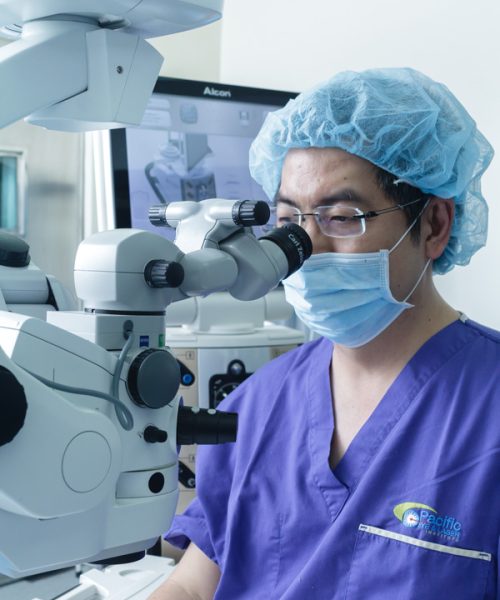Oculoplastic and Reconstructive Surgery is a subspecialty of ophthalmology that deals with various diseases of the eye socket (orbit), eyelids, tear (lacrimal) ducts and the adjacent face (periocular/periorbital area).
These disorders include deformities and abnormalities of the eyelids, thyroid-related eye disease and other inflammatory conditions of structures surrounding the eye, eyelid and orbital tumors, lacrimal duct obstruction causing tearing, and fractures and other injuries to the periocular area.
An Oculoplastic surgeon is an ophthalmologist who has completed additional training in plastic surgery as it relates to the eye and parts of the face proximal to it. Since such procedures can affects one’s ability to see. Oculoplastic surgeons are best qualified to perform this delicate surgery and also provide any care that the eye itself may need. Aside from diseases, an oculoplastic surgeon can also address aesthetic concerns in this specialized area employing botox, facial fillers and surgery.

Addressing Common Ocuplastic & Reconstructive Surgery Questions
Oculoplastic surgeons address a wide range of conditions, including droopy eyelids (ptosis), eyelid malpositions (ectropion, entropion), eyelid tumors, blocked tear ducts, orbital fractures, thyroid eye disease, facial nerve palsy, and cosmetic concerns such as bags under the eyes or excess skin.
Oculoplastic and Reconstructive Surgery encompasses various procedures, such as eyelid surgery (blepharoplasty), ptosis repair, entropion/ectropion correction, eyelid tumor excision, tear duct surgery, orbital decompression, orbital fracture repair, and facial rejuvenation procedures like Botox injections and dermal fillers.
The longevity of the effects depends on the specific procedure performed and individual factors. In general, functional procedures tend to have long-lasting effects, while cosmetic procedures may require touch-ups over time. Your surgeon can provide you with a better understanding of the expected duration of the results during the consultation.
Recovery after Oculoplastic and Reconstructive Surgery varies depending on the procedure performed. Swelling, bruising, and mild discomfort are common but typically subside within a few weeks. Your surgeon will provide specific post-operative instructions, including care for the surgical site, medications, and any activity restrictions during the healing process.
As with any surgical procedure, there are risks and potential complications involved. These can include infection, bleeding, scarring, asymmetry, changes in vision, dry eyes, and, rarely, damage to surrounding structures. It's important to discuss these risks with your surgeon before the procedure and carefully follow their post-operative instructions to minimize potential complications.
When selecting an Oculoplastic and Reconstructive Surgeon, consider their credentials, training, experience, and specialization in this field. Look for board certification in ophthalmology and a fellowship or additional training in oculoplastic surgery. It's also helpful to review before-and-after photos, read patient reviews, and schedule a consultation to discuss your concerns and expectations.
Coverage for Oculoplastic and Reconstructive Surgery depends on the specific procedure and your insurance provider. Functional procedures that address medical conditions may be partially or fully covered by insurance, while purely cosmetic procedures are typically not covered. It's recommended to consult with your insurance provider and the surgeon's office to understand coverage and potential costs.